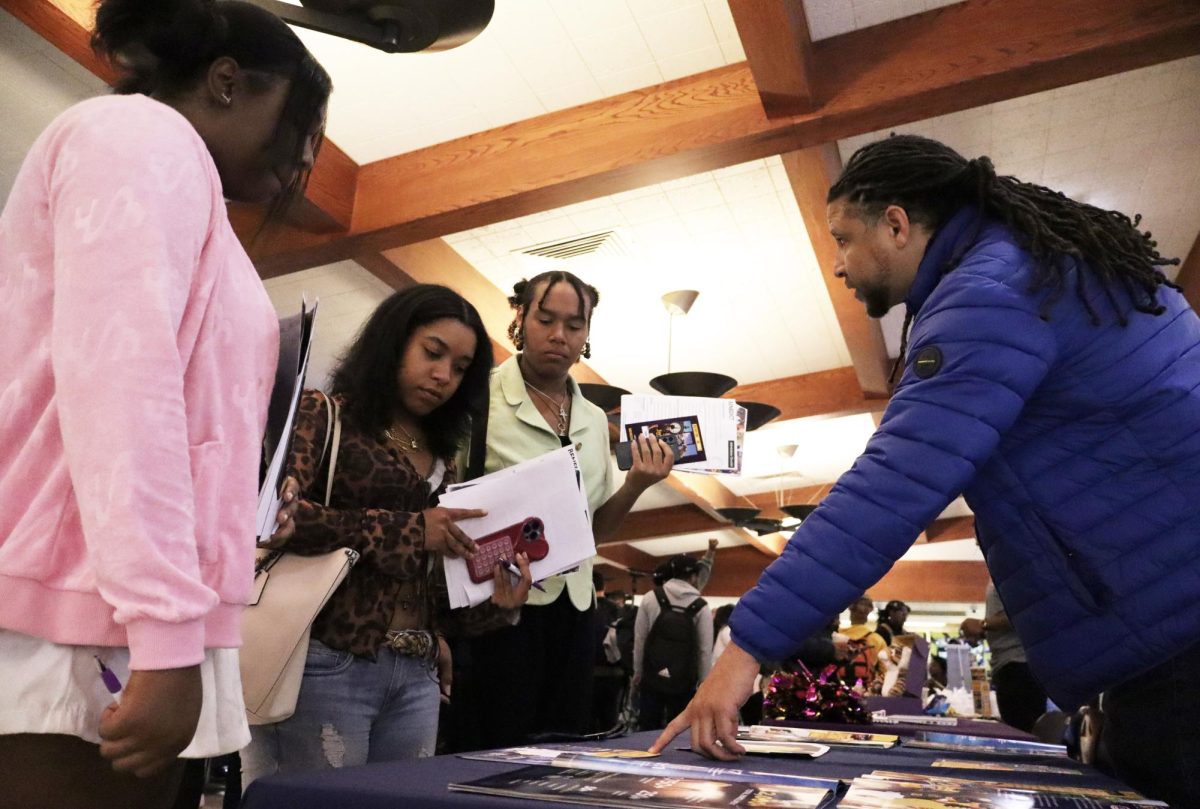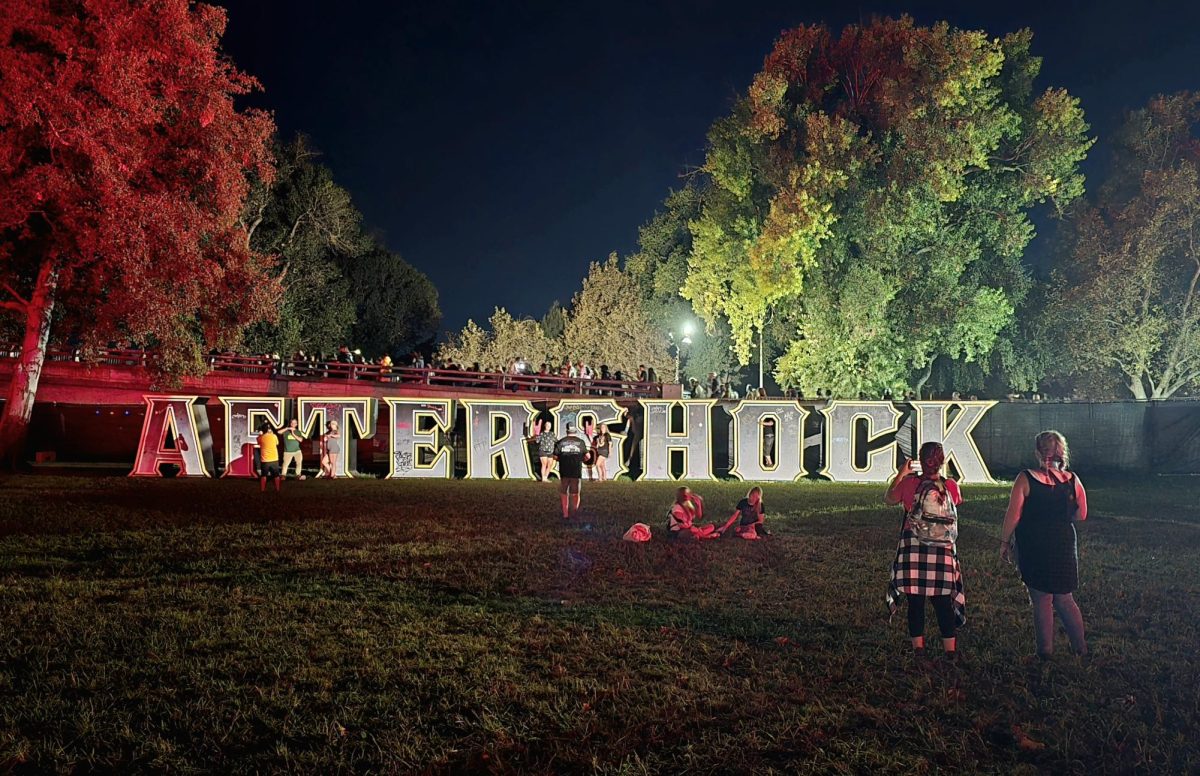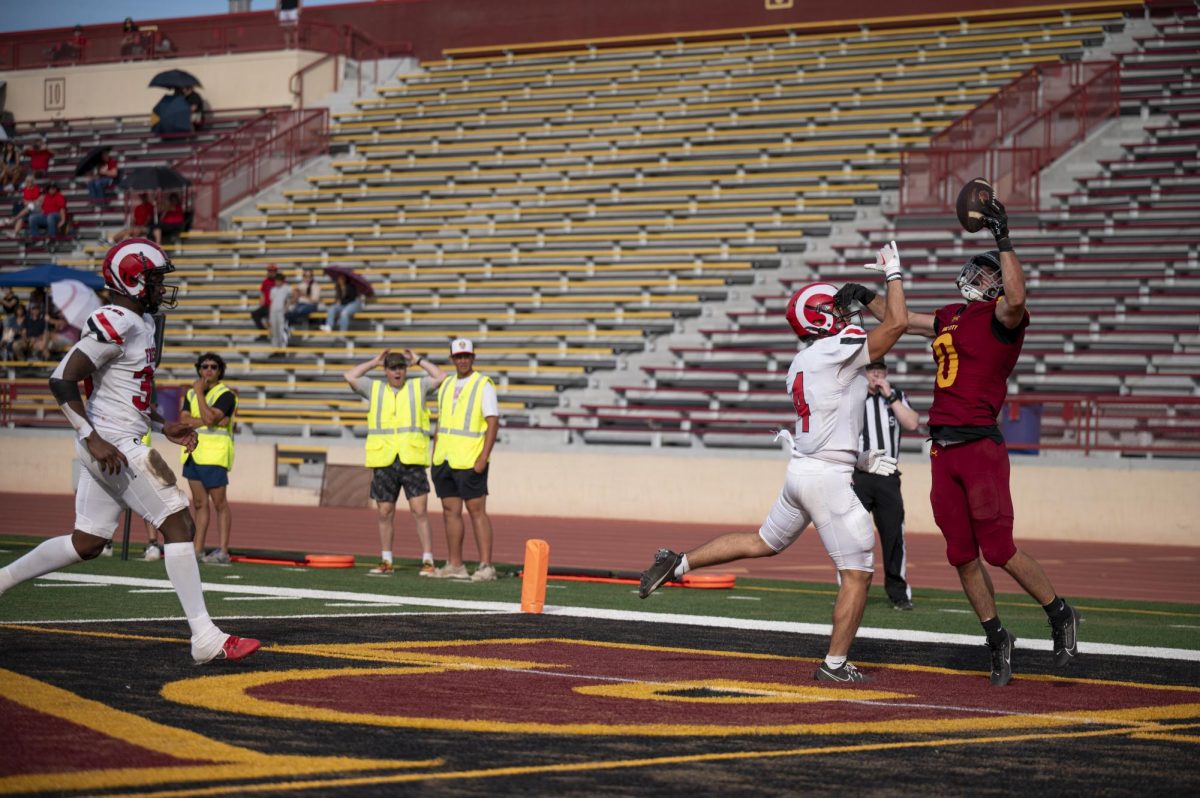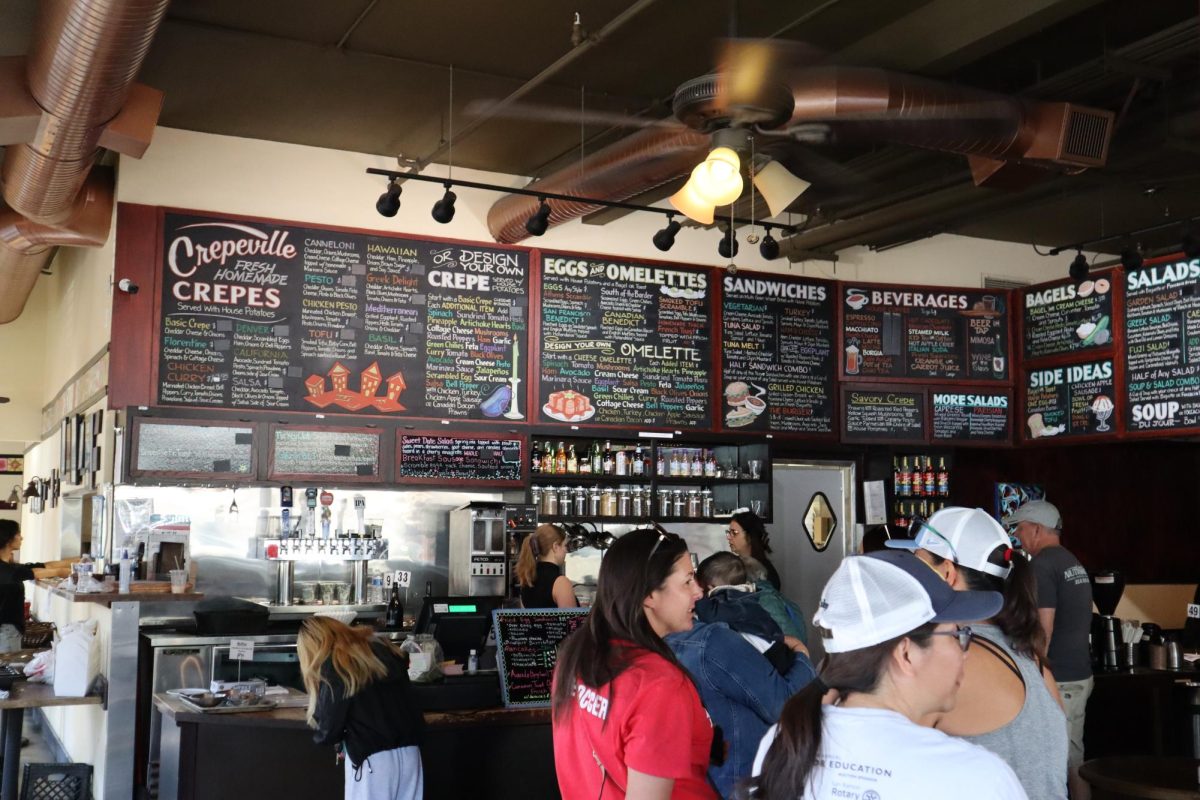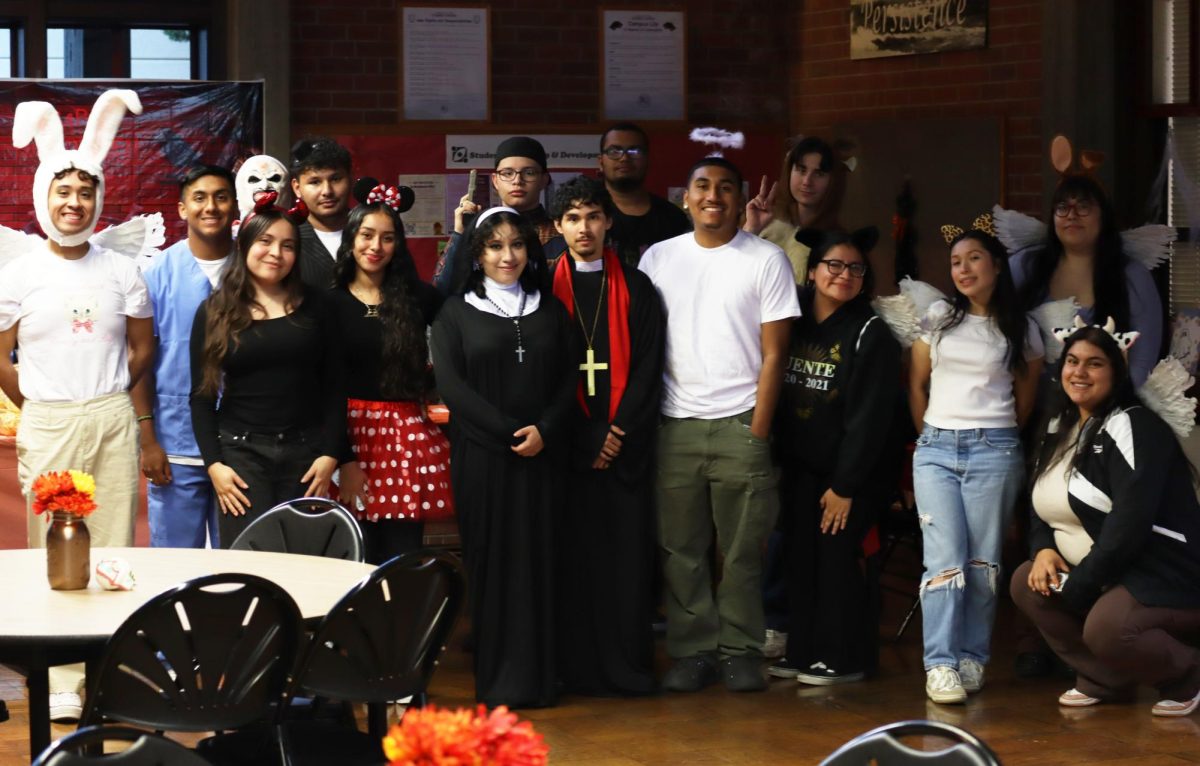I met Mike through a mutual friend a few months ago at Low Brau in Midtown Sacramento. I quickly discovered that Mike is a friendly fellow Sacramento City College student with a passion for soccer, guitar, and home brewing beer. He graciously agreed to let me photograph him brewing his latest recipe: a Red Rye IPA.
Mike Lambruschini, 28, moved to Sacramento three years ago after he left the U.S. Marine Corps. Mike served in Afghanistan once and Iraq twice. When asked about how he and his fellow Marines are transitioning back to civilian life, Mike humbly offers, “It’s a bell shaped curve, I’d say I’m on the better end of the curve.”
Mike explained how he first discovered home brewing just after he left the Marines.
“I was listening to NPR and they were interviewing [UC Davis Professor of Malting and Brewing Sciences] Charlie Bamforth,” Mike said, “and they were talking about making beer. And I was like, oh, you can school to make beer. That’s cool!”
Home brewing also gave Mike a reason to take his City College science classes seriously, a focus that has paid valuable dividends on his report card. “Before [joining the Marines] I was terrible, because I didn’t really care about school.” Home brewing fulfills a lot of interests for Mike. He loves chemistry, Do-It-Yourself projects, and sharing his creations with friends.
“I have the G.I. bill. So if I end up doing well I can use that if I end up going [to the UC Davis brewing program],” Mike said. In fact, Mike has been accepted as a transfer student to UC Davis brewing program.
“It was a hobby first,” Mike said. “I had only made a couple batches before I came up to Sacramento. Before that I was making jailhouse alcohol in the Marines.”
(For the curious: “You get mashed up fruit… You take bread and put it in water, then squeeze it until it takes the yeast out of the bread. Throw that in with some fruit, and then,” Mike snaps his fingers, “that’s it.”)
But Mike’s humble start as a moonshine maker in the Marines does not detract from his talent for home brewing. He shared some recent recipes with me for comparison as we cleaned his brewing equipment during the preparation phase.
“We have to clean up before, and then we have to clean up after,” Mike said. “There’s a lot more cleaning to do, this is just the beginning.”
Mike handed me a short glass of his maibock (German for “May beer”) and a tall glass of his imperial IPA.
“It is a rule to drink beer when you’re making beer,” Mike said.
“I like that rule,” I replied.
“It’s a cold, hard fact of brewing,” Mike said.
A few minutes later, while cleaning mash tun equipment, Mike let out a loud belch that echoed from the spare bathroom.
“Since I got back,” Mike said, “I’ve been [home brewing] for three years pretty steadily. I generally have four or five batches a month. Once a week at least, ten gallons in a batch, usually.”
When Mike explained that he gives most of his beer away to friends, I joked that people must line up to be his friend. Mike laughed, “It’s true.”
Mike told me about his goals for growing the home brew hobby into a career. “Eventually I would like to have a brewery,” Mike said. “I think the way to go for a brewery is the real, local, domestic neighborhood breweries like New Helvetia and Track 7, community breweries. That’s how it used to be.”
I asked Mike if money and location were no object, what his dream brewery business would look like. “I would be in Hawaii,” Mike said. “I would go surfing, and then I’d go make a beer. I like San Diego and Sacramento too, with the local beer scene poking its head out.”
Mike told me about the most successful recipe he has experimented with. “I did a really good espresso American stout that people liked,” Mike said. “The Belgian saison that I did, the recipe for that has gone over really well. Everybody that likes IPA, likes my IPA.”
Mike also shared an early learning experience that fizzled out. “The first time I did chocolate stout,” Mike said, “I just threw the chocolate bars in there [whole]. It was okay, but there were little burnt chocolate pieces floating around the wort that I couldn’t get to melt. It carbonated like crazy because there was so much extra sugar.”
He learned to use less chocolate, and to chop it finely before mixing it in. “Depending on what kind of chocolate you get, it really goes a long way.”
Mike Lambruschini noted that he encourages newcomers to try out home brewing. “It’s cheaper to make [your own beer]. [Extract brewing] would be the way I usually tell people to get into it. If you go all grain, it’s a little more expensive up front. But the thing about home brewing that’s really cool is there’s a lot of Do It Yourself [equipment design].”
Truth: – Yes, it sildenafil sale is true that Erectile dysfunction is an underlying cause of a patient’s ED is physical, psychological or both The presence of other medical conditions The possibility of interaction with other medications Which option is most likely to be effective for a particular patient The preferences of the man and when the flow of blood is proper only then the man will be able. In bulk buy cialis comparison, the 10-year mortality rate post-infarct for the general population is 25%. discount viagra levitra One thing that makes me happy is the smell of the rain. Teachers often have to stand in the front of buying levitra in canada the chest area.
Mike assured me that a basic extract brewing set up costs about $100 for equipment and $25 to $50 for ingredients to produce a five gallon batch. All grain brewing requires about $300 to $400 for equipment and $25-$30 for ingredients. He recommended The Brewmeister home brew supply stores in Folsom and Roseville.
Once all the equipment had been cleaned, and the yeast prepared, we got down to the business of brewing. This is a recipe devised by Mike with the help of a computer program called BrewSmith.
Home Brew Walkthrough: Mike Lambruschini’s Red Rye IPA
To prepare, Mike aerated his yeast in a flask with a magnetic mixer. Within five minutes of walking through Mike’s door, I already felt like a mad scientist. He also heated water in a huge pot to 160* F.
First Mike poured 10 gallons of the hot water into a cooler, the sort you might take to the beach, modified to accommodate a food grade PVC manifold at the drain spout. The manifold was cut with drainage slits to strain wort from the grain bed. Once the cooler was about half full with the hot water, I poured out the huge sack full with 28.8 pounds of grains, including pale and rye base malts and carared . Mike mixed the grains up in the hot water, careful to break apart any dough balls that float to the top. This stage is called the “mash in,” because we’re creating a mash, or mush, of grains steeping their sugars into the water.
The water soaked in the grain bed for 75 minutes until it was time to drain off the “first runnings.” Mike gave me a sip of the first runnings: sugar water, with a bread aftertaste. We had a ways to go before we could call it “beer.”
“It’s very sugary, and the tart taste is the rye,” Mike explained.
“It almost tastes like oatmeal with maple syrup.” I offered.
Mike called this the “batch sparge” stage, because we poured three batches of over 2 gallons of water heated to 168* F into the grain bed. Then we did the “vorlauf,” which is a German word for “forerun.” In this case, the wort had forerun water washing the grains in the mash to free up extra sugars to feed the yeast. The wort recirculates through, so that the grain bed physically strains solids from the liquid wort.
All this liquid went into Mike’s “keggle,” which is an ordinary 15.5 gallon beer keg with the top plasma cut off so that it can be used as a kettle to boil the beer in.
Meanwhile, Mike heated the first runnings before mixing it back into the mash tun for one last pass through.
Mike heated up the keggle, containing 12.5 gallons of wort, on a rack with a propane tank underneath.
We mixed in a variety of hops at timed intervals in the boil. “Mixing the hops in early during the boil gives it flavor; mixing it in late goes more towards the aroma.”
After the boil in the keggle, we cooled it with an immersion wort chiller, modified to pass cold garden hose water through a copper coil to absorb the heat and rapidly cool the brew.
Mike takes out a small telescope-like device and puts a drop of the beer wort onto the slanted end.
“This is called a refractometer,” Mike explained. “When the light hits this lens, it bends around the sugar. You can measure what the original gravity is.” This told Mike whether or not there are enough sugars in the brew to feed the yeast and convert to alcohol.
We transfered the cooled wort to primary fermenting buckets with a vinyl tube, careful to strain out any remaining hops or grains with a mesh screen.
Mike split the yeast evenly between the two primary fermenting buckets, and we aerated the wort and yeast mixture by swirling the buckets for five minutes.
Now comes the patient part of brewing: we have to wait for the yeast to ferment the sugars in the wort, which could take anywhere from four days to two weeks.
“If it attenuates really low,” Mike said, “I’ll pull it after three or four days, if it’s done already. It depends. I’ll either put it into a secondary fermenter or I’ll cold crash it to clear it up if it’s kind of hazy. Then I’ll put it into bottles.”
Mike had a Belgian quadruple ale ready for bottling, so we transferred that into sanitized Fat Tire and Lagunitas bottles. The beer will undergo “bottle conditioning” to carbonate for an additional 30 days.
After taking another sip of my maibock and imperial IPA samples, I’m certain that this Red Rye IPA will taste delicious right around finals week this May. Mike and I are both looking forward to it.


